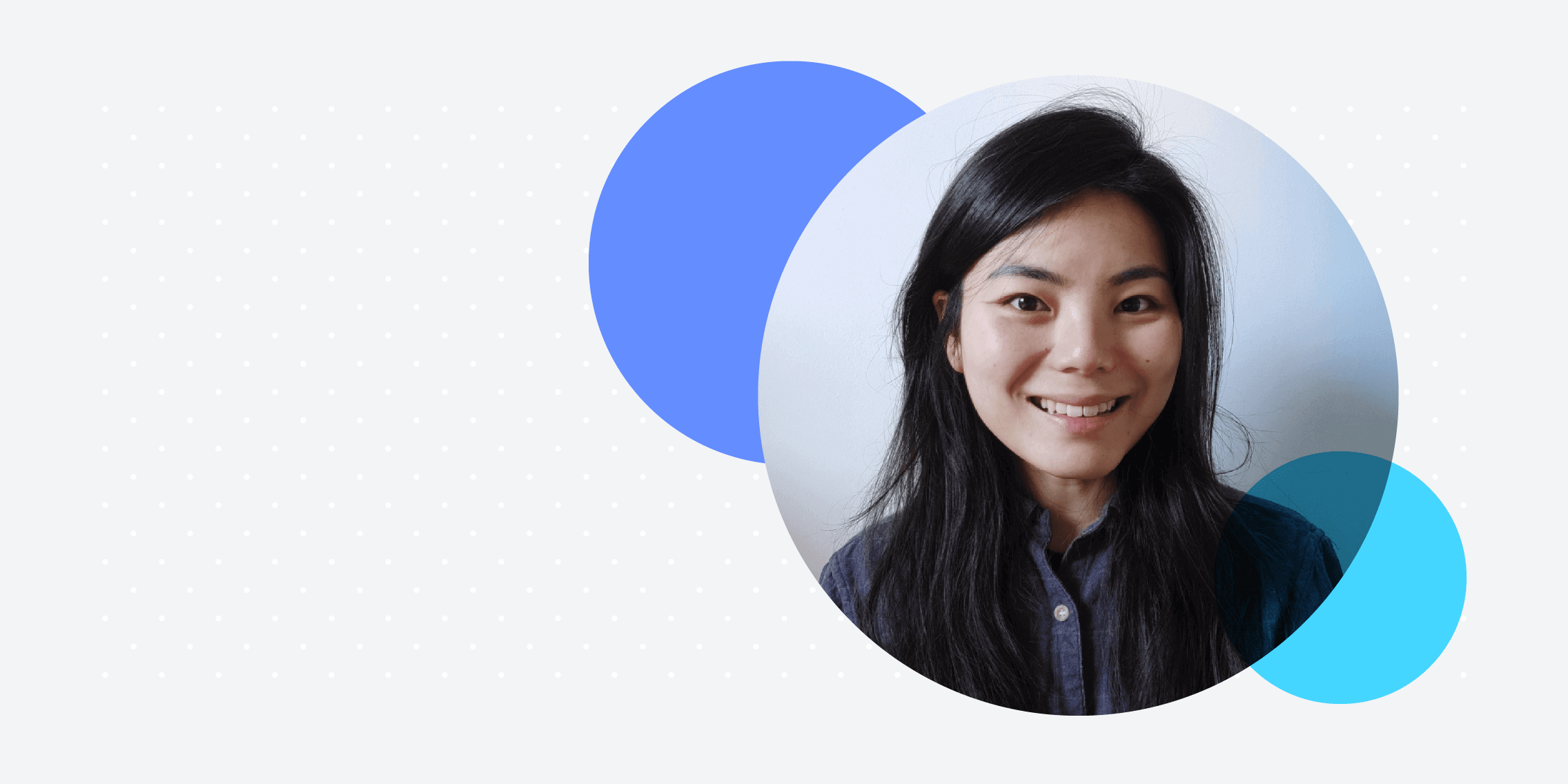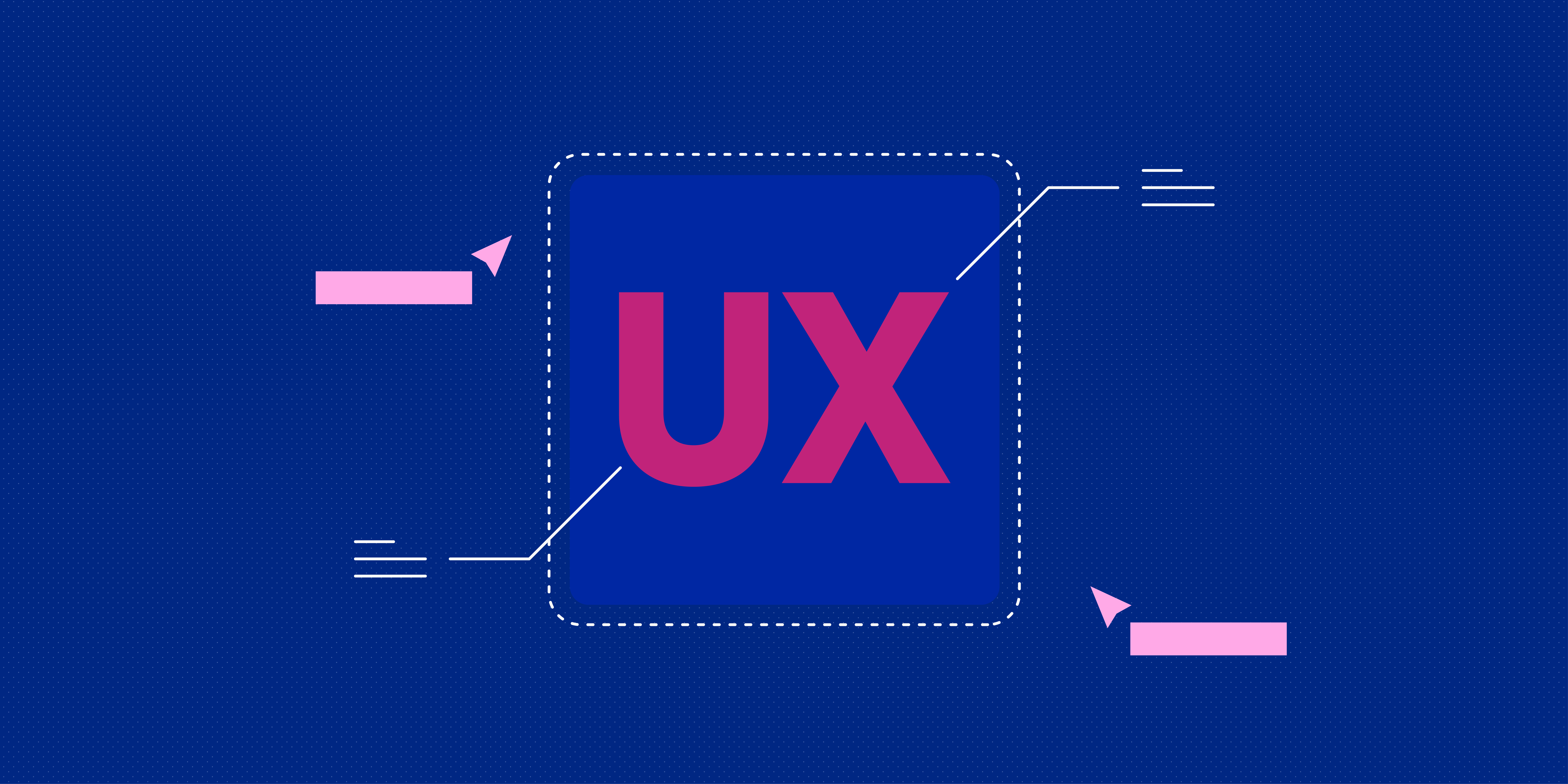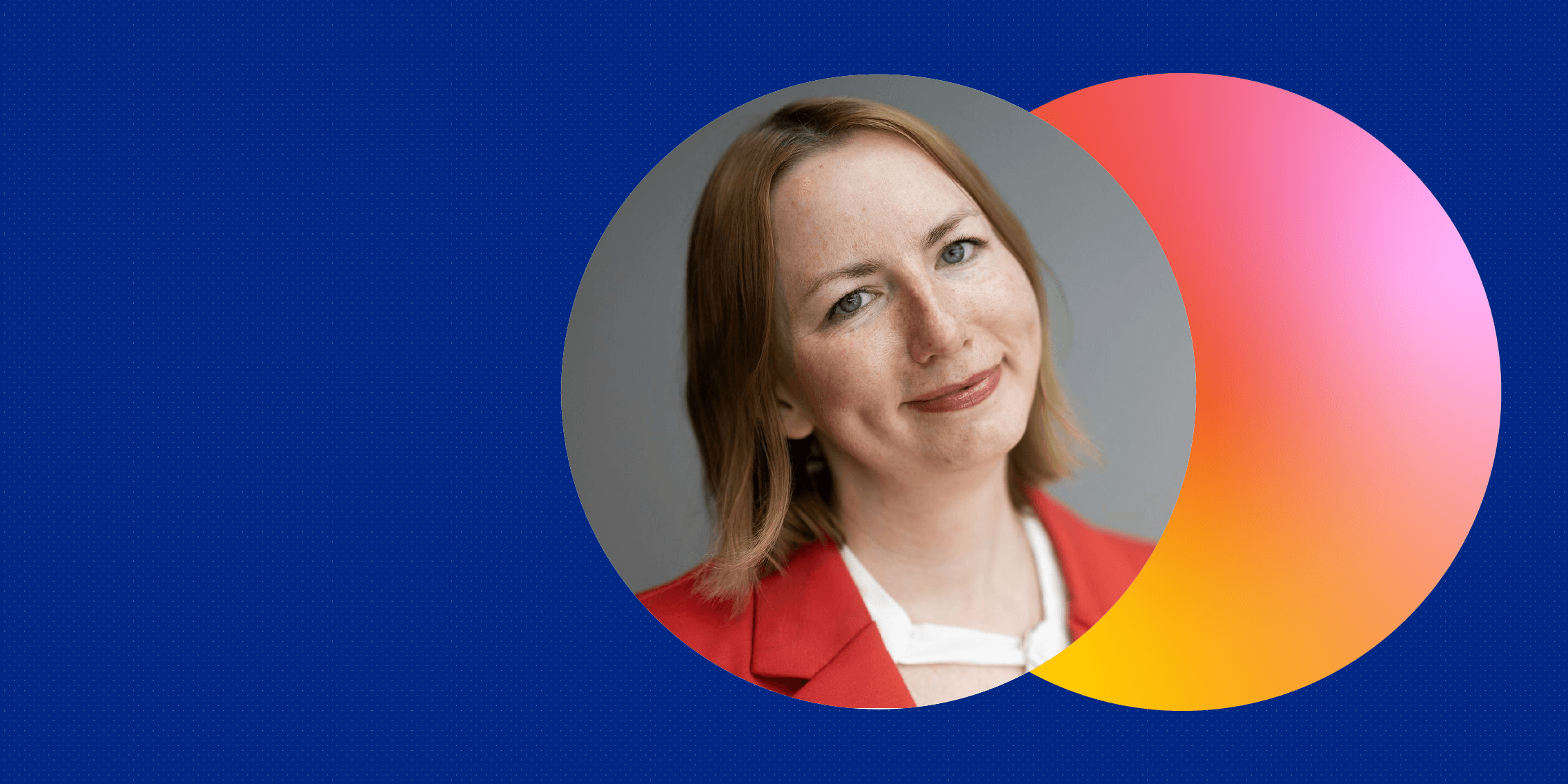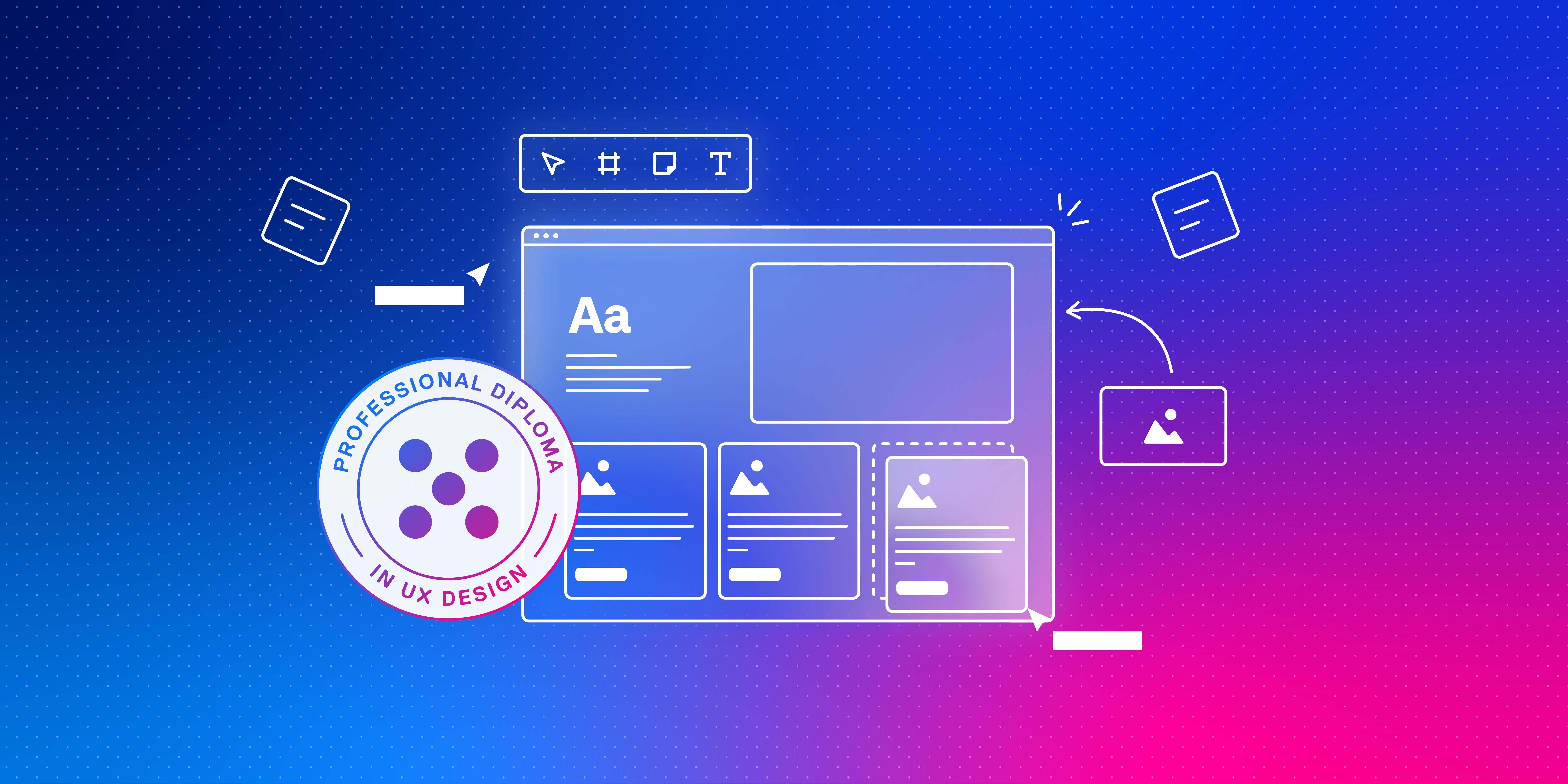Architecture to UX design is a well-trodden career path. Both disciplines focus on creating something beautiful and functional for the end user. But former architect Alexis found a much less conventional segue into UX.
In this inspiring interview, we learn about how the pandemic kick-started Alexis’ journey from ambitious architect to designer for Ikea—and how freelancing shaped her love for cross-disciplinary work.
Why did you decide to upskill in UX?
About seven years ago I moved to The Netherlands to pursue an architecture masters. I had this whole career plan of becoming a successful architect and opening my own office—and then the pandemic hit.
I know that for so many of us, the pandemic was a time for great reflection, but it was also an awful time economically. Half of my office at the time got let go, which for me was huge. The architecture field was hit pretty hard, and I had a moment of reckoning where I saw all these people—many of whom were so talented and much more senior than me—get laid off, which was so disheartening. It really made me reflect on my future in architecture, and I decided it was time for a career change.
I spent a couple of months freelancing because I wanted to try different things before I committed to anything. I went back and forth between branding, copywriting, strategy, UX/UI, prototyping—basically, any job I could get my hands on to pay the bills. But it was also a good way to learn about the digital landscape.
I ended up segueing slowly into tech, and that’s where I found out about UX. I became really interested in joining UX—but there are so many titles and possibilities within the field of UX that I didn’t know where to start. That’s what led me to consider a UX diploma.
How did you come across the UX Design Institute, and what made you decide the UX Diploma was right for you?
Because there’s so much information about UX online, you could actually build your own curriculum and become a self-taught UX designer. But I was very honest with myself at that point as a career-changer that I didn’t want to waste time. I knew I wasn’t disciplined enough. I get distracted very easily, and I want to try new things all the time. I knew that if I were to do it myself, I wouldn’t have the rigor to finish the entire curriculum—and therefore I wouldn’t have the depth needed to make it in the industry.
I was interested enough in UX at the time that I wanted to make sure I was learning it correctly. So I shopped around a bit, spoke to different people, and then I came across the UX Design Institute.
A couple of things stood out to me about their UX diploma. I really liked that they didn’t offer a job guarantee, which I’m always wary of because you just can’t guarantee that someone can get a job. I also looked at the curriculum itself, and it seemed very structured. I liked that it’s really just the one portfolio project you’re focusing on, but you’re using that to learn about the entire spectrum of UX. That’s how I decided the diploma was right for me.
What was your experience of doing the course full-time?
It’s a self paced course, so there’s a risk that you could either try to move too quickly or too slowly. The thing that helped me stay on track through it all was the UX Design Institute community. Most people that joined the community wanted to move at a reasonable pace, so that really helped me find a nice balance.
In hindsight, working and studying wasn’t that difficult—but at the time, it was like having two jobs. And on top of that, you’re wondering if all your hard work is going to pay off. As a career switcher, I really felt like I was taking a big bet. I moved away from something that I was good at, something I trained for and was familiar with, to something completely new. So that anxiety was always there.
The nice thing about this course was that the teachers were engaging with people in the chat. And these weren’t influencer type teachers, they were very much practitioners. Their responses came from a place of deep knowledge rather than surface level advice. So that, as well as the structure, was really helpful.
Could you tell us a little bit more about your portfolio?
I was already working, so I already had exposure to finding and pitching to clients, which gave me a lot of leverage in terms of understanding how to present my work. At the same time, I had this rigorous step-by-step process with the UX Design Institute to supplement my experience. So on one hand I had exposure to shorthand summaries and very quick one-liners, and on the other hand, I had this rigorous 14-step process.
With the material from the course and my client-facing experience, I could easily piece the portfolio together—almost like editing. I learned how to be ruthless about cutting things out, and including what’s important so you can focus on telling a clear story.
What was your experience of job hunting?
When I finished the course, I came across an opening with a consultancy that works with NGOs like the World Health Organization, UNICEF, and other projects in the third sector. They were specifically looking for people who knew how to wireframe. They were really looking for an understanding of how flows work, of how interaction works, of how the screens go from one to another and how do you lay things out.
I actually used my portfolio as a pitch to the hiring person. Towards the end of the course, that’s what we focused more on: Concepting and designing. By using my portfolio to apply, I got the job!
This position really kickstarted my UX design career. Because the job was so focused on wireframing and user flows, I really got to deepen my knowledge of the UX side of things. I wasn’t just designing screens, I was really learning about interaction. I was learning about how one thing leads to another and how to design for different sized screens. It was just a great experience.
How was it starting at the company?
When I took on that job, I was still freelancing, but it was a full-time contract role. So I was still doing some bits on the side. Throughout my experience at the company, I remember thinking, I’ve made the right move and I’m so much more in my element. I felt like I was doing the kind of things that I wanted to do in architecture, but didn’t or couldn’t.
That’s not to say that architecture’s bad. It’s a beautiful thing, and if you have the capacity and the money to be able to sustain yourself in it, it’s great. But I’m very much interested in how people behave and how they think. I’m interested in how we can optimize things for people, and how little changes have a big impact. So for me, UX made a lot more sense.
This role also involved a mix of UX and product management. So I really got to try out different areas and hone my skills.
“My background in architecture helped immensely because how you approach the UX process is very similar to how you construct a building. You design digital products in the pixels, but you have to think of the context, accessibility, and how this product will affect other people. “
Because I worked in this consultancy that designed for something as big as the World Health Organization, contextualization was super important. You can’t design the same thing for different languages, or countries, or internet speeds. And coming from an architecture background really gave me an innate sense of understanding around accessibility.
What’s your job like now? Are you still at the same company?
After that consultancy project, I joined a UK-based seed-stage startup, which aimed to build a network product for workers’ rights. Not only was I their first designer, but also their first product hire.
My product management hybrid experience from my previous consultancy role really lent itself to this role because I was essentially leading design with cross-functional partners. It was a big step for me in terms of growth. So far, I’d been very intentional about the growth I wanted to have. I didn’t spend time questioning everything, I jumped in head first and wanted to swim as far as I could. I just wanted to try and learn everything.
Now I’m at Ikea, on the digital experience design team. At that point I’d experienced freelancing, consulting, and startup life. I switched at the time because I wanted to experience working at a big corporation in a very big team.
What’s a typical day for you currently?
I really enjoy cross-disciplinary work, and pushing the boundaries of what UX design is. My work touches a bit of project management, engineering, and so on. I like being close to the other disciplines, it was the same when I was in architecture. So I think it’s a personality thing!
Currently, my day-to-day is trying to connect the dots across verticals. So if you look at Ikea’s digital experience, they have lots of touchpoints. You have the web, you have the app, and you have the physical stores. Each one of these has a digital product, and each product has a team working vertically. These teams are responsible for creating great experiences and making sure they come to life, making sure they’re accessible, making sure they’re up to par and user friendly. I’m trying to connect the dots across all touchpoints and products to see the overarching user journey.
So if we link it back to the UXDI diploma, it’s very much around the customer journey mapping, affinity diagramming, and user flows. And that’s a lot of my day-to-day life in my current role.
Where do you see your career heading in the future?
I’m very much a designer at heart. I don’t think I’ll leave design. I’m not too tied up with titles either: Whether it’s called UX designer or product designer or interaction designer, to me it matters less because it’s not regulated. The titles are just titles.
I’m most interested in bridging the gap between design and real life.You can design amazing interactions, but it won’t work if you haven’t tested it with users. If we take Ikea, for example, we’re dealing with a global audience. You have to test with specific markets and specific segments of users for accessibility reasons. One of the big pillars of Ikea is designing for the many. But what is the many? Who are the many? These are the kinds of questions I’m interested in.
The further I get into my UX career, the more I see design as a vessel. It has a tremendous power to bridge divides. So how do we lend that vessel to different areas? There’s data. There’s content. There’s so many different areas. How do we bridge the gap between design and other disciplines to impact the end user?
“The web experience today is starting to plateau a little bit. I think we got stuck with wanting to design for the sake of designing and forgetting that the purpose is to serve the end user. So that’s what I want to keep exploring in the future.”
What advice would you give to someone who is considering doing the diploma in UX design?
Think about why you want to be a UX designer. What is it about design that draws you in? Really take the time to think about the answer, because if you can’t answer that, you’re not going to want to do all the work.
UX isn’t easy. It’s a competitive field. It has a fairly low barrier to entry, but when you get into it, it’s an incredibly complex field. It deals with people, it deals with behaviour, how people think in different cultures and society.
You might just be pursuing UX because you think it’s an easy gateway into the world of tech, and a good lifestyle and salary. And don’t get me wrong—you can have that! But the ones that make it in UX are the ones that really understand why they’re there, and what it is about design that draws them in. They know whether they want to solve small but interesting problems, or if they want to innovate on design patterns, or if they want to spend more time in research and talking to users.
“The world of UX is huge. You don’t have to be just a UX designer. You can learn UX and then hone in on something more specific. You just have to keep asking yourself, why am I here?”
Another thing to mention is don’t just rely on UXDI. To supplement my learning, I went out and spoke to people. I joined different communities, and I tried out a lot of different things. When I speak to UXDI students, the ones that feel stuck tend to be those who expect the course to just give them a job at the end of it. It’s so much more than that.
It comes back to your purpose for pursuing UX. As a designer, you have to be naturally curious. You have to network, watch YouTube videos, read constantly and engage. And if it turns out that you’re not actually interested in design, that’s fine—just pivot again!




